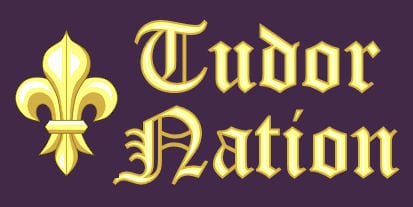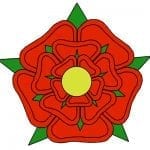

The Wars of the Roses is the name given to a series of conflicts in the fifteenth century fought between the members of the House of Lancaster and the House of York. It was called the Wars of the Roses because the House of Lancaster was represented by the red rose and the House of York was represented by the white rose.
The family tree of King Edward III shows the two houses that fought the Wars of the Roses. Members of the House of Lancaster are shown in red and those of the House of York in white.
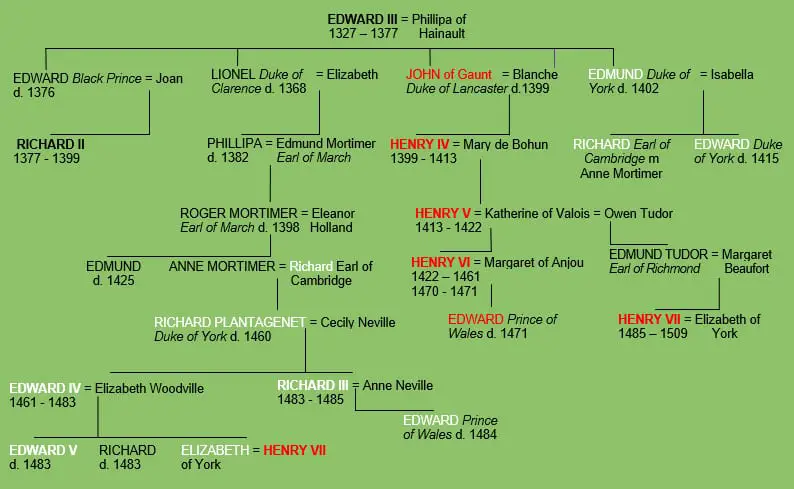
Background to the Wars of the Roses
Richard II and John of Gaunt
King Edward III died in 1377. His grandson, Richard, aged 10 years became King Richard II. Edward’s eldest son, Edward, the Black Prince, had died in 1376. Richard was a minor so the country was ruled by his uncle, John of Gaunt, fourth son of Edward III as regent. John of Gaunt had inherited the title Earl of Lancaster after his father-in-law had died in 1361.

In 1382 Richard began to take over the rule of England, but retained advisers. However he went against their advice and made many unpopular decisions. He spent a large sum of money securing a treaty with France and gave large areas of land in Ireland to his favourite, Robert de Vere. Rather than accept criticism, Richard declared that he was going to rule without advisers.
Henry IV and Henry V
In 1399 John of Gaunt died. Richard confiscated Gaunt’s lands and gave them to his friends. John of Gaunt’s son and heir, Henry Bolingbroke, determined to recover his inheritance. He invaded England, defeated Richard and took the throne for himself as Henry IV. Richard was imprisoned in Pontefract castle where he died, probably of starvation.
Henry IV ruled the country without incident until he died in 1413. His son, Henry succeeded to the throne without opposition. Henry V was a popular, strong king and ruled without problem. Unfortunately he died unexpectedly in 1422 and his son, Henry was just nine months old. Henry V’s brothers acted as regents for the infant King Henry VI.
Henry VI’s mental instability
As Henry VI grew older it became clear that he was weak and greatly influenced by his favourites and his wife, Margaret of Anjou. He chose John of Gaunt’s grandson, the Duke of Somerset to be his closest adviser. This upset Richard Duke of York, heir to the throne, who felt he should advise the King. Richard made no secret of the fact that he wanted Somerset gone. The Duke of Somerset had also upset the leading nobleman, Richard Neville, Earl of Warwick.
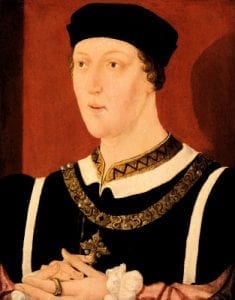
In 1453 Henry VI suffered a mental breakdown and was declared unfit to rule. The Duke of Somerset, with the support of Henry’s wife, Margaret of Anjou, took control of the country. Richard Neville, Earl of Warwick and other leading noblemen, supported Richard Duke of York’s claim to be regent in place of Somerset. However, when Henry VI regained his sanity he put Somerset back in control. Richard Duke of York supported by Richard Neville began raising troops against the king and Somerset. War was inevitable.
The Battles of the Wars of the Roses
The First Battle of St Albans 22nd May 1455
Yorkists – Around 4,000 men led by Richard Duke of York supported by Richard Neville, Earl of Warwick and Richard Neville Earl of Salisbury.
Lancastrians – Around 2,000 men led by Henry VI (he played no active role due to being mentally incapacitated), supported by Edmund Beaufort, Duke of Somerset, Humphrey Stafford, Duke of Buckingham, Henry Percy, Earl of Northumberland, Thomas Courtenay, Earl of Devon and Thomas, Lord Clifford.
Result – A decisive Yorkist victory. Somerset, Northumberland and Clifford were killed while Henry VI and Buckingham were taken prisoner.
After – Richard of York became Protector of England and ran the country with little problem for three years until Henry VI regained his mental faculty and resumed personal rule in 1459. He dismissed Richard Duke of York, without offering him any position in government. York responded by taking up arms against the king.
Battle of Blore Heath 23rd September 1459
Yorkists – Around 5,000 men led by Richard Earl of Salisbury supported by Sir John Neville and Thomas Neville.
Lancastrians – Around 10,000 men led by James Tuchet, Lord Audley and John Sutton, Lord Dudley.
Result – The Yorkists successfully fought off a Lancastrian attack. Audley was killed and Dudley was captured.
After – Richard Earl of Salisbury moved the Yorkist army to Ludlow to prepare for another Lancastrian attack.
Rout of Ludlow (Battle of Ludford Bridge) 12th to 13th October 1459
Yorkists – The Yorkist army included Richard Duke of York, Richard Neville, Earl of Salisbury and Richard Neville, Earl of Warwick
Lancastrians – The Lancastrian Army was led by Henry VI and Humphrey Stafford Duke of Buckingham.
Result – A great number of the Yorkist army deserted when they saw the Lancastrian army leaving the Yorkists with no choice but to stand down.
After – Richard of York fled to Ireland while his son, Edward, Earl of March was taken to Calais with Salisbury and Warwick. Henry VI drew up an Act of Attainder that declared all of York’s lands forfeit. The following year Edward, Earl of March supported by Warwick and Salisbury returned to England at the head of an army.
Battle of Northampton 10th July 1460
Yorkists – The Yorkist army was led by Edward Earl of March, supported by Richard Neville, Earl of Warwick and William Neville, Lord Fauconberg.
Lancastrians – The Lancastrian Army was led by Henry VI and Humphrey Stafford Duke of Buckingham, supported by John Talbot Earl of Shrewsbury and Edmund, Lord Grey.
Result – A Yorkist victory. Buckingham and Shrewsbury were killed and Henry VI was taken prisoner.
After – Margaret of Anjou and Prince Edward fled to Harlech Castle. Richard of York tried to take the throne but did not have the support of the nobles. Instead, he was made heir to the throne over Henry VI’s son, Edward by the Act of Accord. Queen Margaret was unhappy with the disinheritance of her son and raised an army.
Battle of Wakefield 30th December 1460
Yorkists – Around 9,000 men led by Richard Duke of York, supported by Edmund, Earl of Rutland and Richard Neville, Earl of Salisbury.
Lancastrians – A large force of more than 10,000 led by Henry Beaufort, Duke of Somerset, supported by Henry Percy, Earl of Northumberland, John Lord Clifford and Andrew Trollope.
Result – A decisive Lancastrian victory. Richard, Duke of York, Edmund, Earl of Rutland and Richard Neville, Earl of Salisbury were killed.
After – Edward Earl of March inherited the title Duke of York. He was put forward as a claimant to the throne by the Earl of Warwick and marched to intercept a Lancastrian force that was marching to London.
Battle of Mortimer’s Cross 2nd February 1461
Yorkists – Led by Edward Earl of March.
Lancastrians – Led by Sir Owen Tudor supported by Jasper Tudor, Earl of Pembroke and James Butler, Earl of Wiltshire.
Result – A decisive Yorkist victory. Sir Owen Tudor was killed.
Second Battle of St Albans 17th February 1461
Yorkists – Around 10,000 men led by Richard Neville, Earl of Warwick.
Lancastrians – Around 15,000 men led by Margaret of Anjou.
Result – The Lancastrians defeated the Yorkists.
After – Henry VI was released from captivity. However, he and Margaret of Anjou failed to take decisive action to secure the throne. Edward Duke of York took advantage and on 4th March 1461 took the throne as Edward IV with Warwick as his chief adviser.
Battle of Towton 29th March 1461
Yorkists – Around 25,000 men led by Edward, Duke of York supported by Richard Neville Earl of Warwick, William Neville Lord Fauconberg and John Mowbray Duke of Norfolk.
Lancastrians – Around 30,000 men led by Henry Beaufort Duke of Somerset supported by Henry Percy Earl of Northumberland, Henry Holland Duke of Exeter and Sir Andrew Trollope.
Result – A decisive Yorkist victory. Henry Percy and Andrew Trollope were killed in the battle.
After – Henry VI, Margaret of Anjou and Prince Edward fled to Scotland.
King Edward IV
Edward IV was crowned King of England on 28th June 1461. In October 1462, Margaret of Anjou’s forces invaded England from Scotland and took Alnwick and Bamburgh castles. They were re-captured by Warwick three months later.
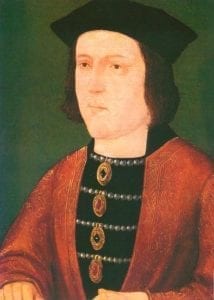
In the Spring of 1463 there were rebellions against Edward’s rule in the north of England. As the rebels were receiving support from the French, the rebellions were difficult to suppress. Warwick decided that he needed to stop the French from supporting the rebels and negotiated a truce with the French that was to be sealed with the marriage of Edward to the sister of the King of France. The French withdrew their support from the rebels and the leaders of the unrest were captured and executed.
In 1464 Edward secretly married Elizabeth Woodville rather than honouring the French marriage. This, and the fact that Edward took advice from his father-in-law rather than Warwick and his ministers led to a breakdown in the relationship between Edward and Warwick. Nevertheless, Edward remained secure on the throne and his position was strengthened when Henry VI was captured and sent to the Tower of London in 1465. However, relations between Edward and Warwick continued to deteriorate and in 1469 Warwick withdrew his support and began to favour Edward’s younger brother, George, Duke of Clarence.
The Lancastrians had been raising forces to challenge Edward IV and in 1469 the Wars of the Roses broke out again.
Battle of Edgecote Moor 26th July 1469
Yorkists – An army of northern rebels led by Sir John Conyers, organised by Warwick.
Lancastrians – Led by William Herbert Earl of Pembroke and Humphrey Stafford Earl of Devon.
Result – A victory for the Yorkist rebels. William Herbert and Humphrey Stafford were killed.
After – Warwick captured Edward IV and executed his father-in-law, Baron Rivers, and his brother-in-law, John Woodville. Warwick hoped to gain control of the throne but he failed to gain sufficient support and was forced to release the king. Although they tried to work together the relationship between Edward and Warwick broke down again. Warwick organised rebel support against the King.
Battle of Losecoat Field (Battle of Empingham) 12th March 1470
Royalist Yorkists – Led by Edward IV
Rebel Yorkists – Led by Robert Welles, Lord Willoughby
Result – Edward IV defeated the rebel army. The battle gained its name because the rebels, wearing clothes showing Warwick’s emblem, discarded their clothes as they fled from the field.
After – Warwick and George, Duke of Clarence fled to France where they made an alliance with Margaret of Anjou. They returned to England in the Autumn at the head of a large army. Edward knew he did not have the forces to defeat this Lancastrian army and fled to Burgundy. Henry VI was restored to the throne on 30th October 1470. He appointed Warwick chief minister. Edward’s lands and titles were confiscated. In 1471 Edward, with Burgundian support, returned to England. The Earl of Northumberland and Edward’s brother George defected from the Lancastrians and joined Edward’s army.
Battle of Barnet 14th April 1471
Yorkists – Around 10,000 men led by Edward IV, supported by his brother Richard Duke of Gloucester and William, Lord Hastings.
Lancastrians – Around 20,000 men led by Richard Neville Earl of Warwick supported by John Neville Marquess of Montagu, Henry Holland Duke of Exeter and John de Vere Earl of Oxford.
Result – The Yorkists were victorious after two Lancastrian divisions accidentally attacked each other in thick fog. The Earl of Warwick and John Neville were killed.
Battle of Tewekesbury 4th May 1471
Yorkists – Around 4,000 men led by Edward IV, supported by his brother Richard Duke of Gloucester and William, Lord Hastings.
Lancastrians – Around 6,000 men led by Edmund Beaufort Duke of Somerset supported by Margaret of Anjou, Edward Prince of Wales, John Beaufort Marquis of Dorset, John Courtenay Earl of Devon and John Lord Wenlock.
Result – This was a decisive Yorkist victory that saw Edmund Beaufort, John Beaufort, John Courtenay, John Lord Wenlock and Edward, Prince of Wales killed. Margaret of Anjou was taken prisoner.
King Edward IV Return to Power
King Edward IV returned to London on 22nd May. It is believed that Henry VI was murdered in the Tower on the same day. Henry Tudor, the sole remaining Lancastrian heir fled to Brittany. Edward ruled secure for the next eleven years until he fell ill at Easter 1483. He died on 9th April and his 12 year old son Edward became King Edward V.
Richard Duke of Gloucester
Edward IV’s brother, Richard Duke of Gloucester was designated protector for the young King. Edward V had spent much of his life living in the house of his Woodville relatives and they had a strong influence over him. They were anxious to have Edward crowned quickly so as to retain power for themselves and set out for London.
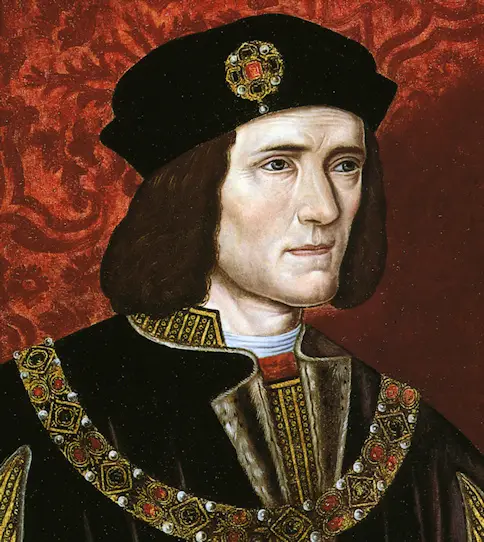
Richard, as Protector, also wanted control of the king and intercepted the Woodville party as they rode south. Initially, Richard kept up a pretence of friendliness towards them, but then had members of the Woodville family arrested and placed in captivity. He took Edward to London and placed him in the Tower of London to await his coronation which was scheduled for 22nd June.
Elizabeth Woodville learned of the arrest of her relatives and took her children to the sanctuary of Westminster Abbey. In the face of continued opposition from the Woodvilles, Richard was concerned that they would use Edward’s brother, Richard, as a focus for a challenge to the throne.
The Princes in the Tower
Richard Duke of Gloucester persuaded Elizabeth Woodville to give him custody of Prince Richard and he joined his brother in the Tower of London. It has been traditionally thought that Elizabeth Woodville did this to protect her other children. However, some historians now believe that Richard was sent abroad. In June 1483 it was rumoured that there was a pre-contract between Edward IV and Eleanor Talbot. Because of this parliament declared the marriage of Edward IV and Elizabeth Woodville invalid and their children illegitimate. Richard Duke of Gloucester, next in line to the throne, was crowned King Richard III. The two princes in the Tower disappeared.
Buckingham’s Rebellion
In October 1483 the Duke of Buckingham, with the support of Henry Tudor, rebelled against King Richard. Buckingham was captured and executed.

Henry Tudor planned to take the throne. He promised that when he became king he would marry Edward IV’s eldest daughter, Elizabeth of York, uniting the houses of Lancaster and York and ending the Wars of the Roses.
In August 1485, Henry Tudor landed at Milford Haven in Wales and marched inland. Meanwhile, Richard III summoned his army to muster at Leicester.
Battle of Bosworth Field 22nd August 1485 – End of the Wars of the Roses
Yorkists – Around 9,000 men led by Richard III supported by John Howard Duke of Norfolk, Henry Percy Earl of Northumberland, John de la Pole Earl of Lincoln, Thomas Howard Earl of Surrey and Francis Viscount Lovell.
Lancastrians – Around 6,000 men led by Henry Tudor Earl of Richmond supported by Jasper Tudor Earl of Pembroke, John de Vere Earl of Oxford, Sir Gilbert Talbot, Sir Philibert de Chandee and Rhys ap Thomas.
Result – A decisive Lancastrian victory. Richard III was killed on the battlefield and the House of York was overthrown. John Howard was also killed and Thomas Howard taken prisoner.
Henry Tudor became King Henry VII founding the Tudor dynasty. As promised he married Elizabeth of York uniting the two rival houses and ending the Wars of the Roses. The Tudor Rose is an amalgam of the red rose of Lancaster and the white rose of York.
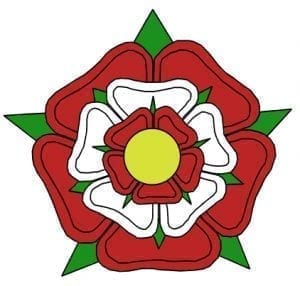
Published Jul 13, 2021 @ 2:05 pm – Updated – Dec 08 2024
Harvard Reference for this page:
Heather Y Wheeler. (2021 – 2025). The Wars of the Roses – How did the Tudors come to power? Available: https://www.tudornation.com/the-wars-of-the-roses-how-did-the-tudors-come-to-power Last accessed April 16th, 2025
